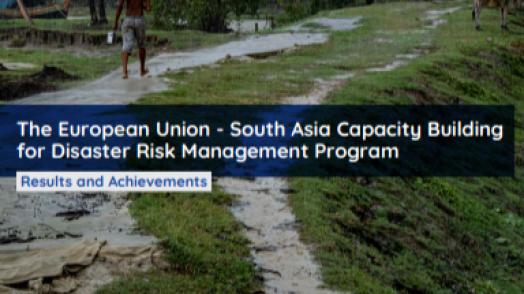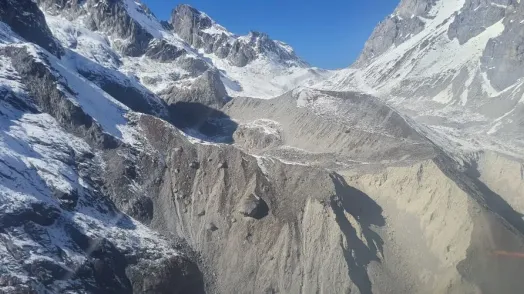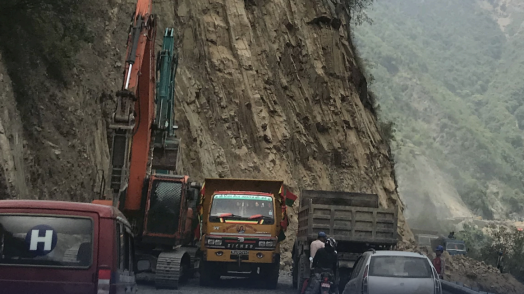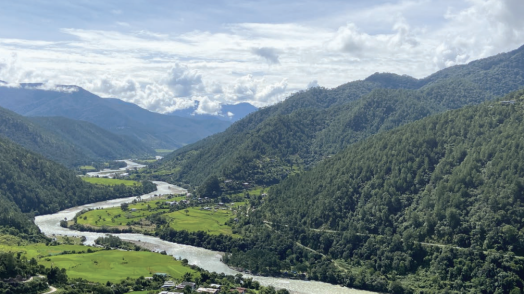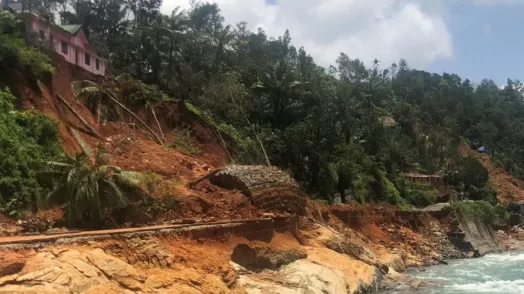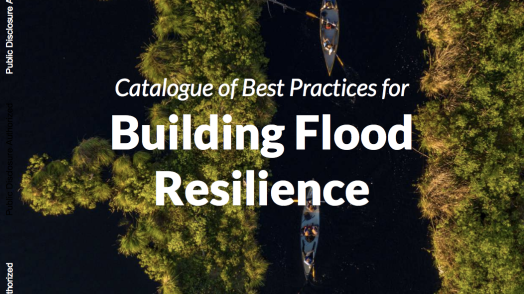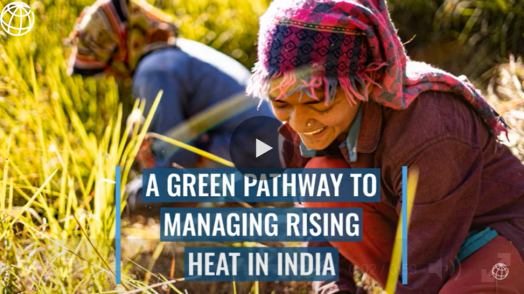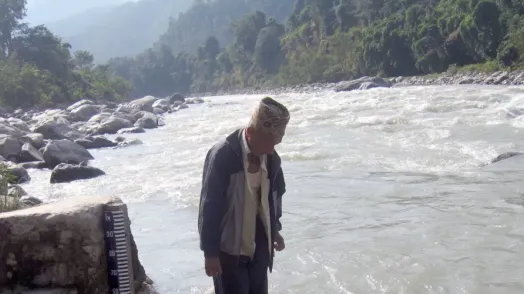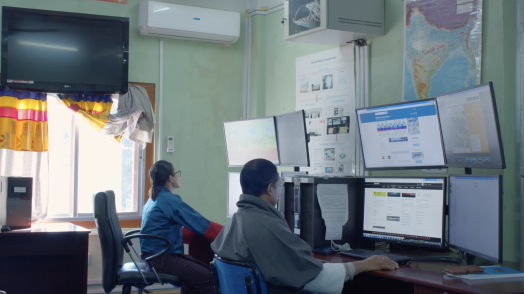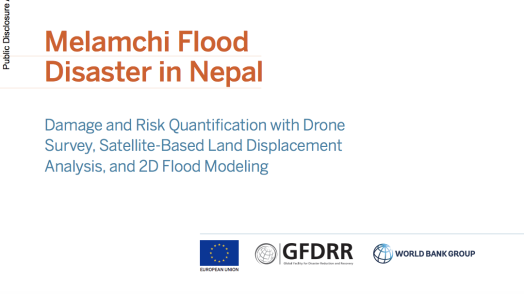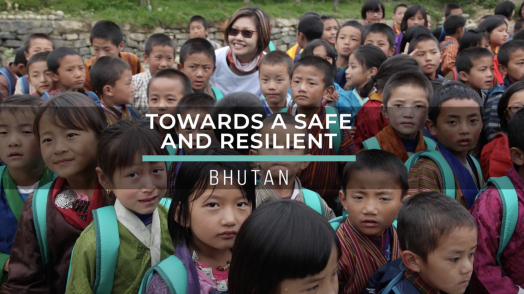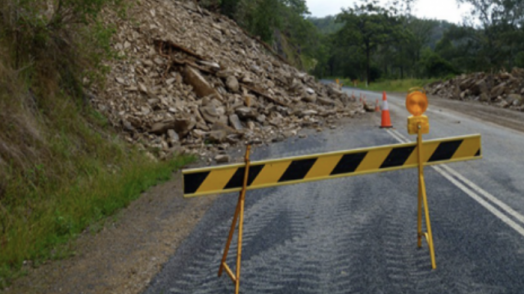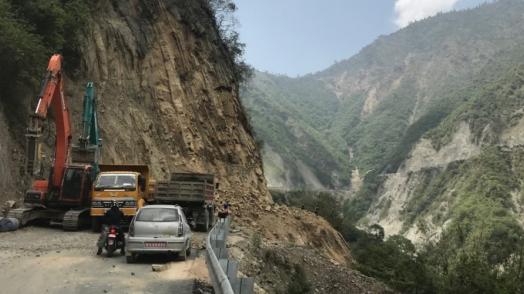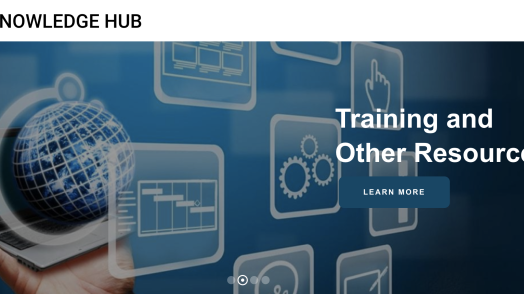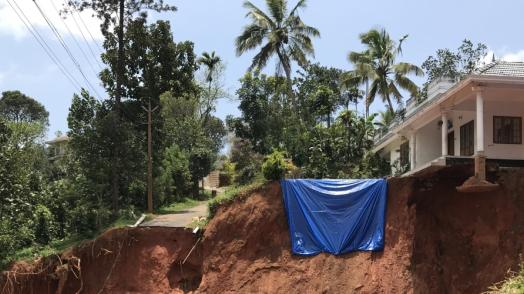The European Union - South Asia Capacity Building for Disaster Risk Management Program (EU-SAR DRM Program), launched in 2015, helps build the resilience of South Asia to weather and climate-related disasters by strengthening Disaster Risk Management (DRM) and hydro-meteorological (hydromet) service capacity. The program plays a catalytic role in leveraging knowledge and financing by drawing on the best expertise in the field and working closely with a broad range of partners and stakeholders. The EU-SAR DRM Program addresses service delivery limitations at a regional and national level. It is focused on enhancing capacity among regional bodies, national DRM agencies, and other counterparts in the South Asian Region.
The EU-SAR DRM Program is funded by the EU and managed by the Global Facility for Disaster Reduction and Recovery (GFDRR). It is implemented by the World Bank and national and regional partners in the South Asian region.
Highlights
CONTEXT
During the past two decades, over 50% of South Asians - more than 750 million people - have been affected by natural disasters. South Asia is particularly vulnerable to climate-related hazards like floods and tropical cyclones. By their nature, these hazards often affect multiple countries at a time, with events originating in one country and having a direct and significant impact on a neighboring country. Flooding, particularly during the monsoon season, is common throughout the region and causes widespread damage. In low lying Bangladesh, for example, river flooding annually reaches 20% of the country, increasing up to 70% in extreme years, with the poor and vulnerable populations typically the worst affected. Addressing this requires cooperation between countries to better forecast and mitigate the impact of climate-related hazards. South Asian nations are increasingly recognizing the threats natural hazards pose and are striving to improve national and regional cooperation for resilience. There is a limited regional network of hydrometeorological services in the region and limited DRM capacity in some countries. Many coordination and capacity challenges exist, however, and this Program seeks to seize on opportunities to address them.
APPROACH
Cooperation across borders is particularly important in the field of weather and climate services, where national capability in South Asia continues to further develop and the potential benefits of regional forecasting are significant. The program aims to address this challenge, with the goal of providing technical assistance and other support to help South Asian countries strengthen capacity to generate, access, and use disaster risk information for preparedness and risk reduction. Further, the program focuses on strengthening capacity to incorporate disaster and climate risk information in decision making and integrating solutions on regional and transboundary disaster risk.
The EU-SAR DRM Program focuses on:
- Developing national and regional DRM knowledge learning and institutional capacity to enhance preparedness, contingency planning, and service delivery; and
- Developing regional and national hydrometeorological institutional capacity.
The Program is implemented in coordination with development partners and stakeholders, including the European Union. At the national level, partners include national DRM centers and national meteorological and hydrological services. Other partners include water resource agencies, river basin authorities, and municipal authorities that play critical technical and operational roles in DRM.
MAIN ACTIVITIES
The EU-SAR DRM Program activities have enhanced regional cooperation and technical exchange on the hydromet and geohazards risk management agenda. It has 20 grants (16 active), and among its main activities are the below:
- Regional and national DRM institutional assessment and governance, covering Afghanistan, Bhutan, India, Maldives, Nepal, Pakistan, and Sri Lanka (completed)
- Roadmap for regional dialogue on hydromet and flood risk management in Afghanistan (completed)
- Technical assistance to World Bank DRM and Hydromet investments in Afghanistan, Nepal, Sri Lanka, Bangladesh and Bhutan (ongoing)
- Development of guidance note for hydromet institutional and legal frameworks for South Asian countries (ongoing)
- Assessment of current and planned hydromet and climate service-related capacities in South Asian countries (ongoing)
Further, other activities include:
- Technical assistance to build regional capacity on operational forecasting and service delivery through the South Asia Hydromet Forum (SAHF) with objectives to:
- Promote knowledge and peer exchange
- Support a regional approach for strengthening key elements of the hydromet service value chain
- Design and implement weather forecasting and service delivery training program
- Share regional information portal and real-time communications mechanism
HIGHLIGHTS OF KEY ACHIEVEMENTS
- Enhanced regional cooperation and technical exchange on hydromet and geohazards risk management agenda
- Strengthened capacities to generate, access, and use disaster risk information oriented towards the development of DRM strategies, such as preparedness, including hydro-meteorological agencies services, and investment plans for risk reduction
- Strengthened capacities to incorporate disaster and climate risk information in decision- making
- More integrated solutions applied on regional and transboundary risks relevant for South Asia countries
- Disaster management agencies and other government entities provided with targeted technical assistance and products
- Disaster management agency (at national and sub-national levels) staff has benefitted from training on contingency planning and service delivery through capacity development
- Officials trained to deliver disaster management services
- Disaster management agencies (at national and sub-national levels) have strengthened their regional cooperation and/or information sharing through focused regional dialogue
- Hydromet agencies (at regional and national levels) have benefitted from training in multi-hazard monitoring and forecasting, and have strengthened their capacity in early warning systems, multi-hazard monitoring and forecasting, sharing forecasts and alerts
- Countries have completed feasibility or cost-benefit analyses on national or cross-border modernization of hydromet services, including flood forecasting and risk management platforms
Due to implementation delays compounded by the current COVID-19 crisis and its associated direct consequences, project activities have faced operational challenges on contracting and deployment travel restrictions, limited government capacity and focus due to competing priorities.
NEXT STEPS AND FUTURE GOALS
The EU-SAR DRM Program will examine opportunities to support regionally focused organizations in developing thematically focused capacity building programs, such as a virtual regional resource center, and a post-disaster regional emergency coordination mechanism. Other activities include the sharing of best practices for hydromet modernization and data sharing, especially in connection with disaster and climate risk management services.
Planned activities include:
- Technical assistance to build regional capacity on operational forecasting and service delivery through the South Asia Hydromet Forum (SAHF)
- Promote knowledge and peer exchange
- Regional approach for strengthening key elements of the hydromet service value chain
- Design and implement weather forecasting and service delivery training program
- Regional information portal and real-time communications mechanism
- Support next generation preparedness planning and urban coastal resilience in South Asia
VIDEOS
- The European Union - South Asia Capacity Building for Disaster Risk Management Program
- Building Resilient Transport and Making Communities Safer from Geohazard Risks
- Towards a safe and resilient Bhutan
- South Asia Hydromet Forum
- Building Resilient Transport in the South Asia Region
- 2019 South-to-South Learning Workshop on Geohazard Risk Management in Transport: Lessons Learned for South Asia
- 2019 South-to-South Learning Workshop on Geohazard Risk Management in Transport: New Zealand's Journey to Resilience
- Training on slope assessment, investigation and design measures for engineers, November 25–29, 2019, Nepal
- SAHFII: Pathways for Regional Collaboration, November 19, 2019
BLOGS
- In South Asia, disaster risk management is key to durable development
- Road geohazard risk management: new tools and e-learning
- How South Asia can protect life and assets against landslides (January 09, 2020)
- Minimizing the risks caused by geohazards in South Asia (November 16, 2016)
PLATFORM
SAHF Knowleddge Hub
The Knowledge Hub would serve as a one-stop platform for “Products” support such as the real-time observation data sharing, forecast data visualization, ensemble forecast products analysis linked to geospatial data analytics, and “Capacity and service delivery” training and orientation support like need-based on-the-job training, online discussion forums to discuss issues and doubts, interactive and live conferencing support. It is an integrative effort, and it will be developed in a scalable and phased manner to accommodate future demands.
FORUMS AND TRAININGS
Road Geohazard Risk Management E-learning
Geohazard risks are increasing across the globe due to climate change. Any disruptions to the transport system will reverse economic and development gains and impact citizens’ safety and access to critical infrastructure such as hospitals, schools, or shelters.
This E-leaning will help users learn the road geohazard risk management step by step in a systematic and comprehensive manner.
Second South Asia Hydromet Forum 2019
The World Bank and the Government of Nepal, in technical partnership with the World Meteorological Organization, co-hosted the second South Asia Hydromet Forum (SAHF II) on November 19 - 21, 2019, in Nepal. The purpose of the event was to further strengthen regional engagement to deliver reliable and timely weather information that local communities, farmers, construction firms, hydropower operators, and other economic sectors can act on.
South Asia Hydromet Services Forum (Inaugural Event)
During September 18 - 20, 2018, in Switzerland, the World Bank and the World Meteorological Organization, with the support from the European Union and the Global Facility for Disaster Reduction and Recovery, brought together weather and climate stakeholders from the South Asia Region, including the Heads of the National Meteorological and Hydrological agencies as well as user-sector representatives from weather-dependent sectors. The goal of this event was to serve as a platform for exchange of knowledge and strategic visions, fostering innovative approaches and strengthening collaboration.
Training on slope assessment, investigation and design measures for engineers
During November 25 – 29, 2019, in Nepal, the World Bank together with the Department of Roads (DOR), conducted a training program built on the numerous slope protection experience projects along the hilly roads in Nepal. The 5-day training was provided to 30 participants, targeting the young road engineers and practitioners in Nepal and Bhutan.
PUBLICATIONS
- The EU-South Asia Capacity Building for DRM Program : Results and Achievements
- Regional Program for Hydromet Services and Resilience: South Asia Program brief
- Strengthening Geohazard Risk Management in DRM and Transport in the South Asia Region
- Flood Risk Management in Dhaka: A Case for Eco-Engineering Approaches and Institutional Reform
- Summary Report: 2019 South Asia Hydromet Forum: Pathways for Regional Collaboration
- Program Profiles: A series highlighting key GFDRR-supported initiatives
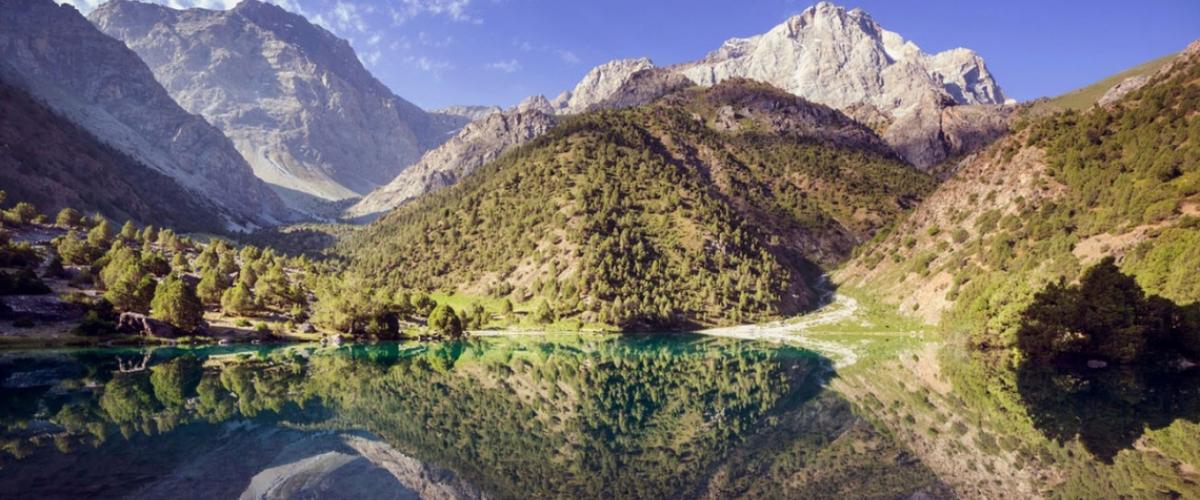
Integrating geohazard risk management into infrastructure programs to help save lives and preserve investments.

